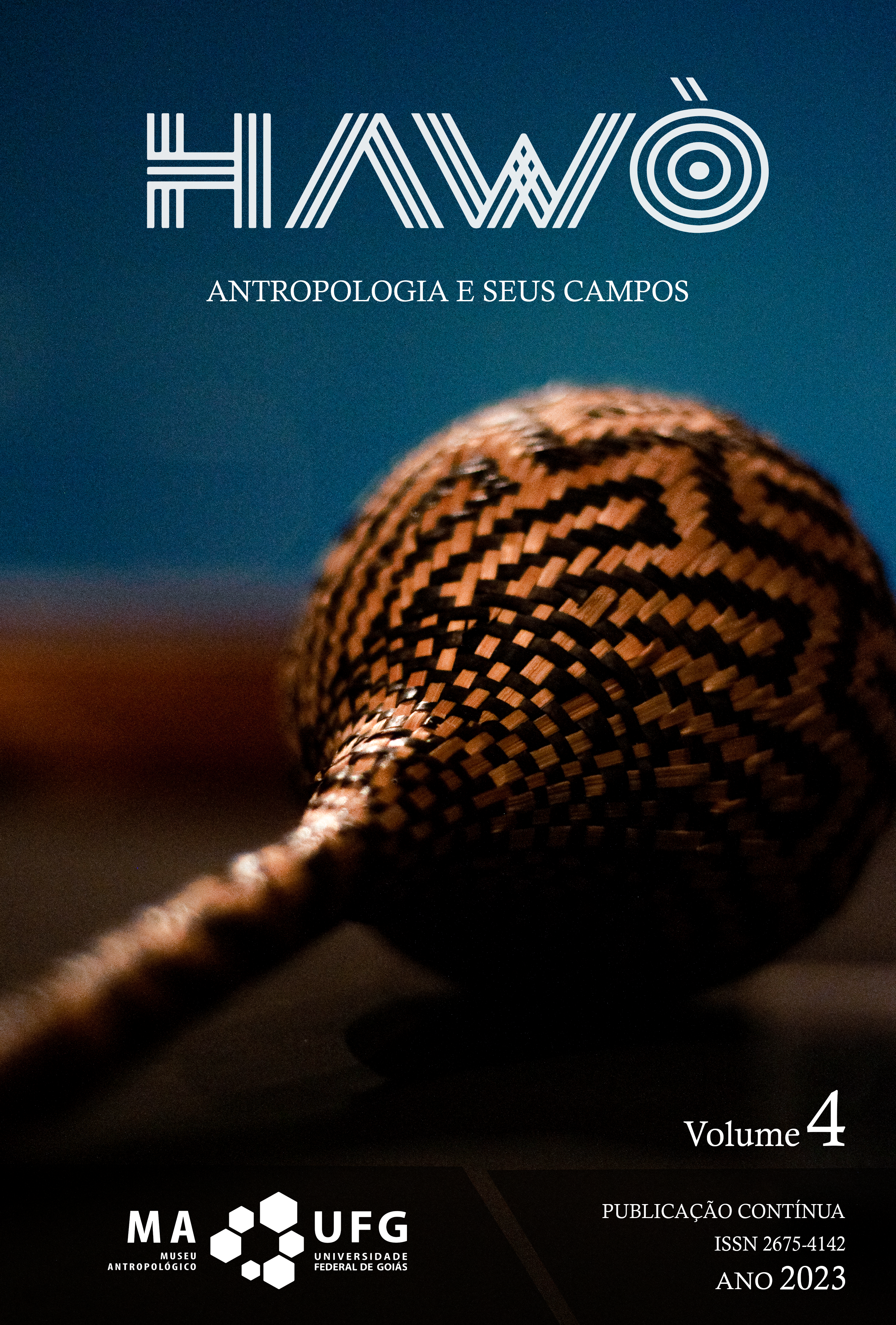O que esse silêncio tem a me dizer
DOI:
https://doi.org/10.5216/hawo.v4.75901Keywords:
Mulheres negras, Histórias de vida, Oralidades, Ficar viva, SabênciasAbstract
The objective of this work was to try to build a dialogue based on the
narratives of two black women, highlighting how relevant these listenings can be.
Thinking about the process of writing and producing knowledge, considering the
scientific work based on life stories. Based on some bibliographical references, I
understand concepts that can theoretically support my desire to listen to the life stories
of black women. I resume the testimonies narrated in 2015 by these women, in the city
of Iporá/Goiás, and I review a writing done in this period that was also kept. This
exercise comes as a preliminary cut to what I propose to research in the doctorate, which
is related to this listening and understanding ancestral knowledge cultivated by black
women. Thus I propose here, to cast glances and reflections on these oralities, their
complexities together with the notion of community education addressed by Bell Hooks
(2013), collective memory of Maurice Halbwach (1990), intangible heritage, to think
oralities in Funari and Pelegrini (2006) that was already in the draft of this writing. And
I invite here to create a ground in this existence, the notion of Cerradeira Woman shared
in the writing of Luciene Dias and Ralyanara Freire (2020).
References
REFERÊNCIAS
DIAS, Luciene de Oliveira; FREIRE, Ralyanara Moreira. Mulheres em movimento e expressões na construção do viver-Cerrado. Élisiée, Ver. Geo. UEG – Goiás, v.9, n.2, e922014, jul./dez. 2020.
EVARISTO, Conceição. Da grafia-desenho de minha mãe, um dos lugares de nascimento de minha escrita. In: ALEXANDRE, Marcos Antônio (org.). Representações performáticas brasileiras: Teorias, práticas e suas interfaces. Belo Horizonte: Mazza Edições, 2007.
FONSECA, J. J. S. Metodologia da pesquisa científica. Fortaleza: UEC, 2002. Apostila
FUNARI, P. P.; PELEGRINI, S. C. A. Patrimônio Histórico e Cultural. Rio de Janeiro: Jorge Zahar Ed., 2006.
GERHARDT, Tatiana Engel e Denise Tolfo Silveira. Métodos de pesquisa. Porto Alegre: Editora da UFRGS, 2009.
GONZALEZ, Lélia. Racismo e sexismo na cultura brasileira. In: SILVA, Luiz Antônio Machado et all. Ciências Sociais Hoje 2: movimentos sociais urbanos, minorias étnicas e outros estudos. Brasília: ANPOCS, 1984. p. 223-244.
HALBWACHS, Maurice. A Memória Coletiva. São Paulo: Editora Revista dos Tribunais, 1990.
HOOKS, Bell. Ensinando a transgredir: a Educação como prática de liberdade. Tradução de Marcelo Brandão Cipolla. [S. l]: Editora Martins Fontes, 2013.
IPHAN, Instituto do Patrimônio Histórico e Artístico Nacional. Patrimônio Imaterial. Disponível em: http://portal.iphan.gov.br/pagina/detalhes/234. Acesso em: 24 out. 2017.
KRENAK, Ailton. Futuro Ancestral. 1. ed. São Paulo: Companhia das Letras, 2022.
Downloads
Published
How to Cite
Issue
Section
Categories
License
Copyright (c) 2024 Dayana Gomes Pereira

This work is licensed under a Creative Commons Attribution 4.0 International License.
Os(as) autor(es/as) que publicam na Revista Hawò são os responsáveis pelo conteúdo dos artigos assinados e detém os direitos autorais. Concedem à revista, o direito de primeira publicação com o trabalho simultaneamente licenciado sob a Licença Creative Commons Atribuição-Não Comercial (Open Archives Iniciative - OAI). Esse recurso, utilizado para periódicos de acesso aberto, permite o compartilhamento do trabalho para fins não comerciais com reconhecimento da autoria. Caso o texto venha a ser publicado posteriormente em outro veículo, o autor deverá informar que o mesmo foi originalmente publicado como artigo na revista Hawò. Assim sendo, ainda que a revista seja detentora da primeira publicação, é reservado aos autores o direito de publicar seus trabalhos em repositórios institucionais ou em suas páginas pessoais, mesmo que o processo editorial não tenha sido finalizado.
É reservado à revista, o direito de realizar alterações de ordem normativa, ortográfica e gramatical visando manter o padrão de língua, respeitando-se, porém, o estilo dos autores.







